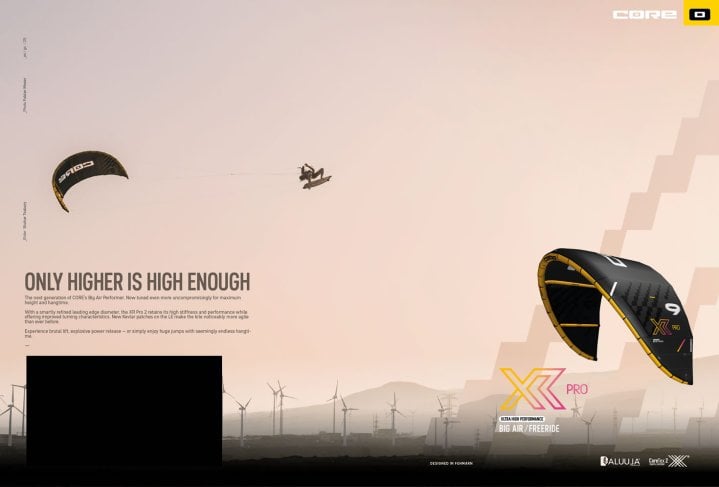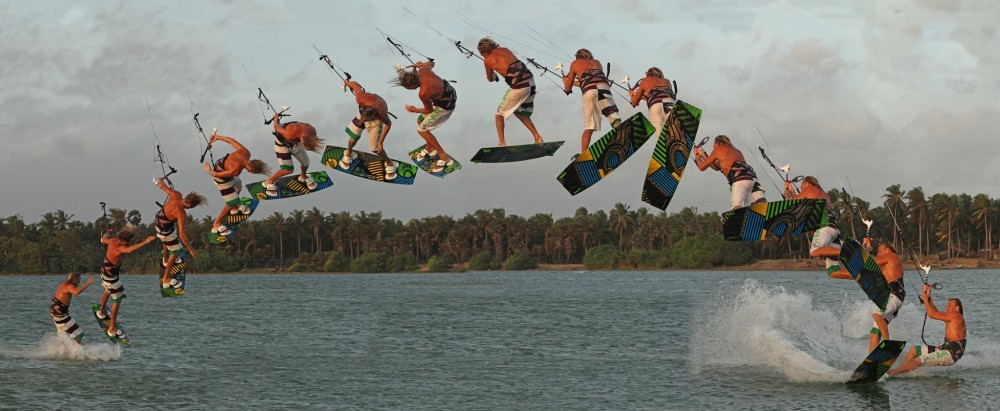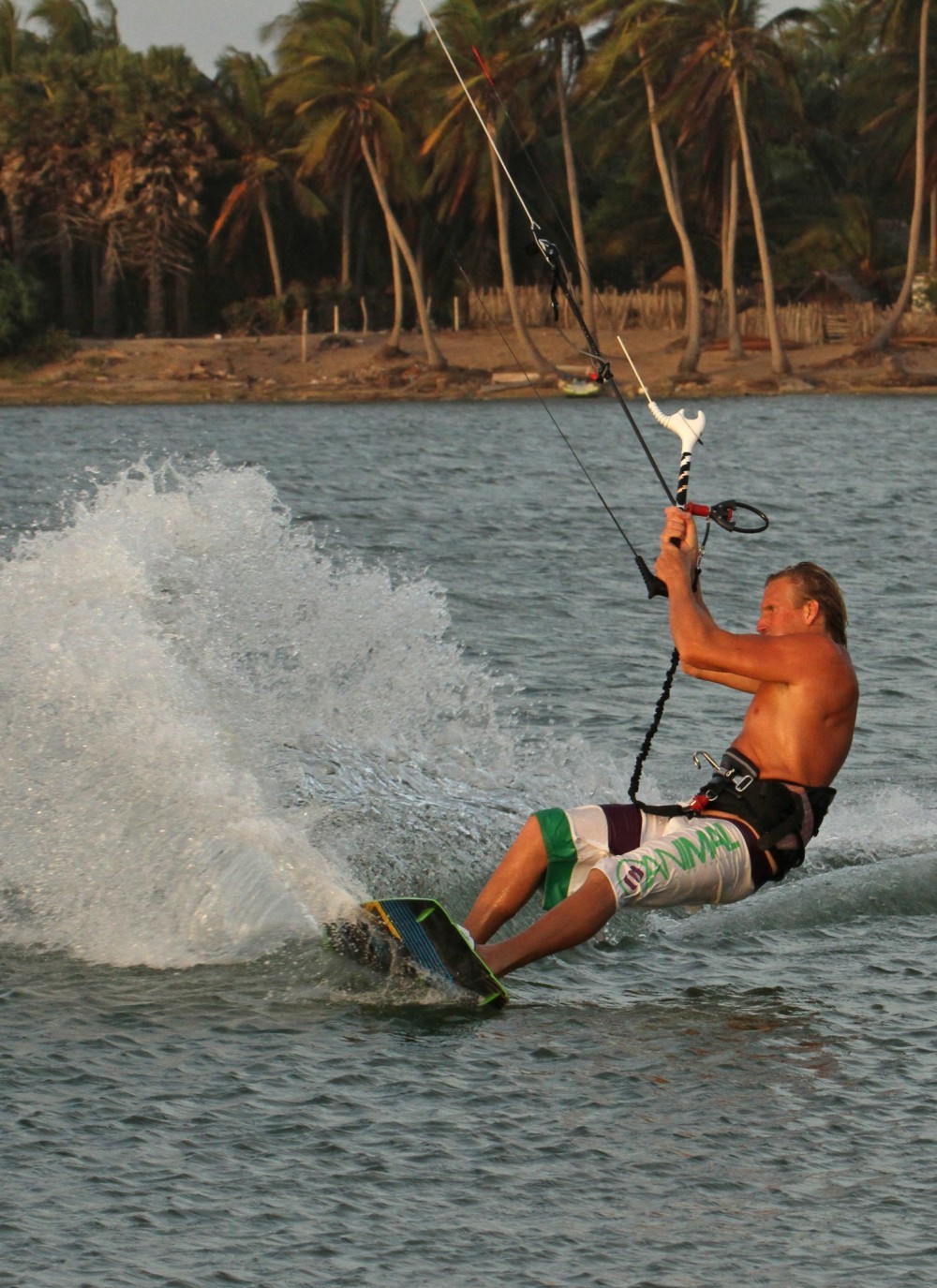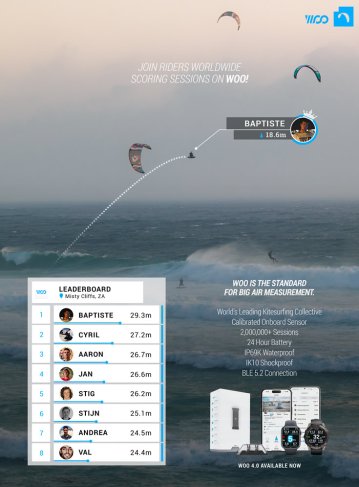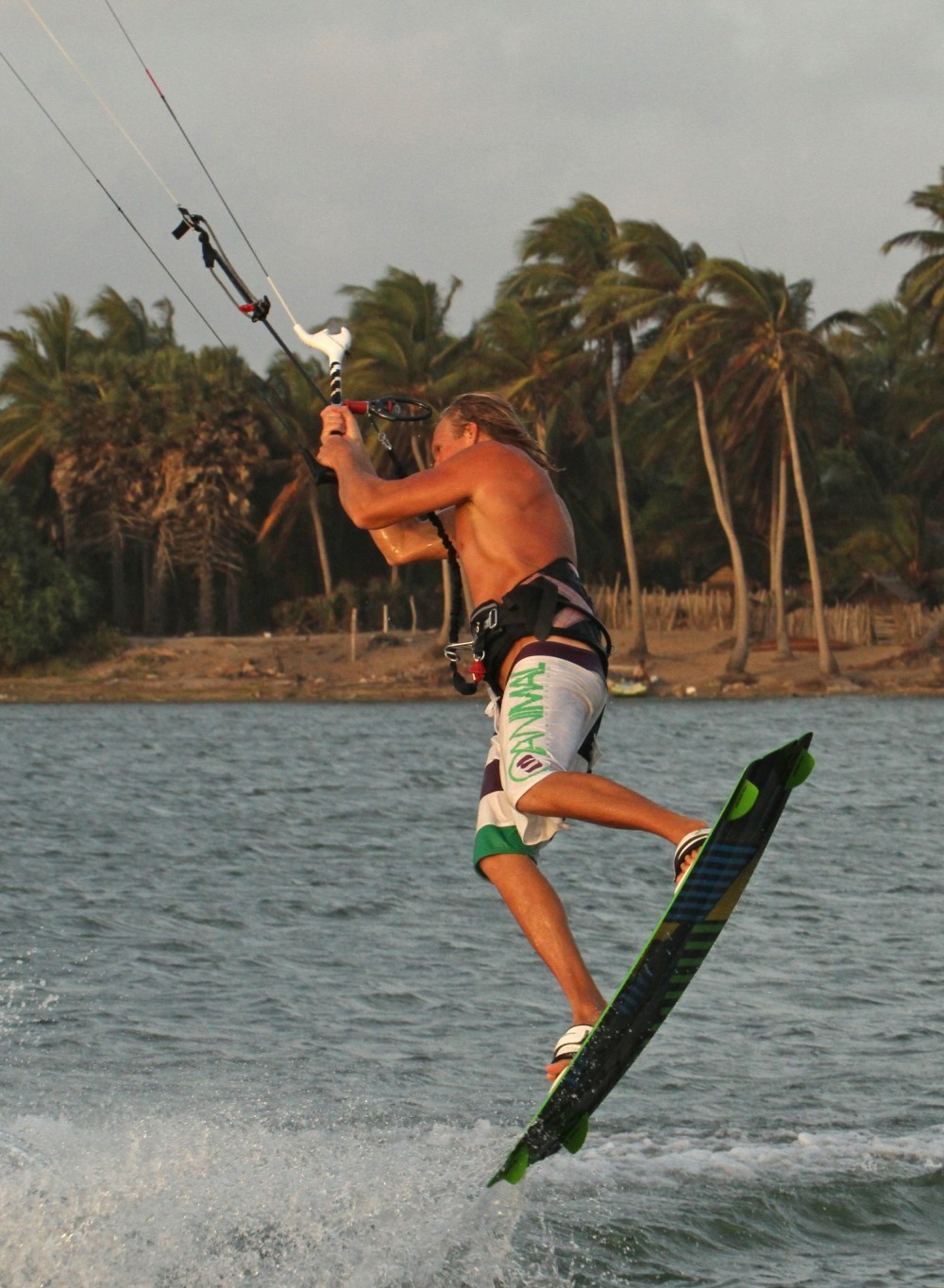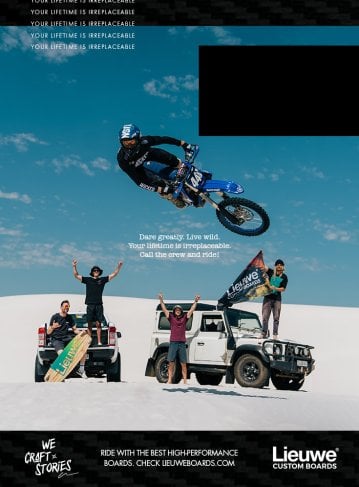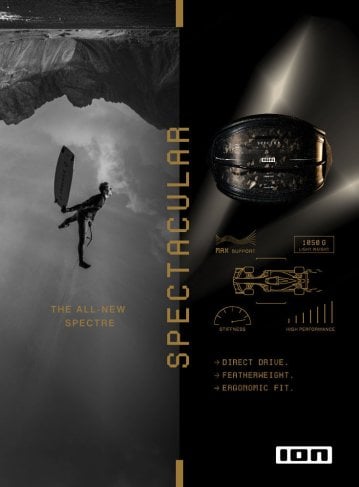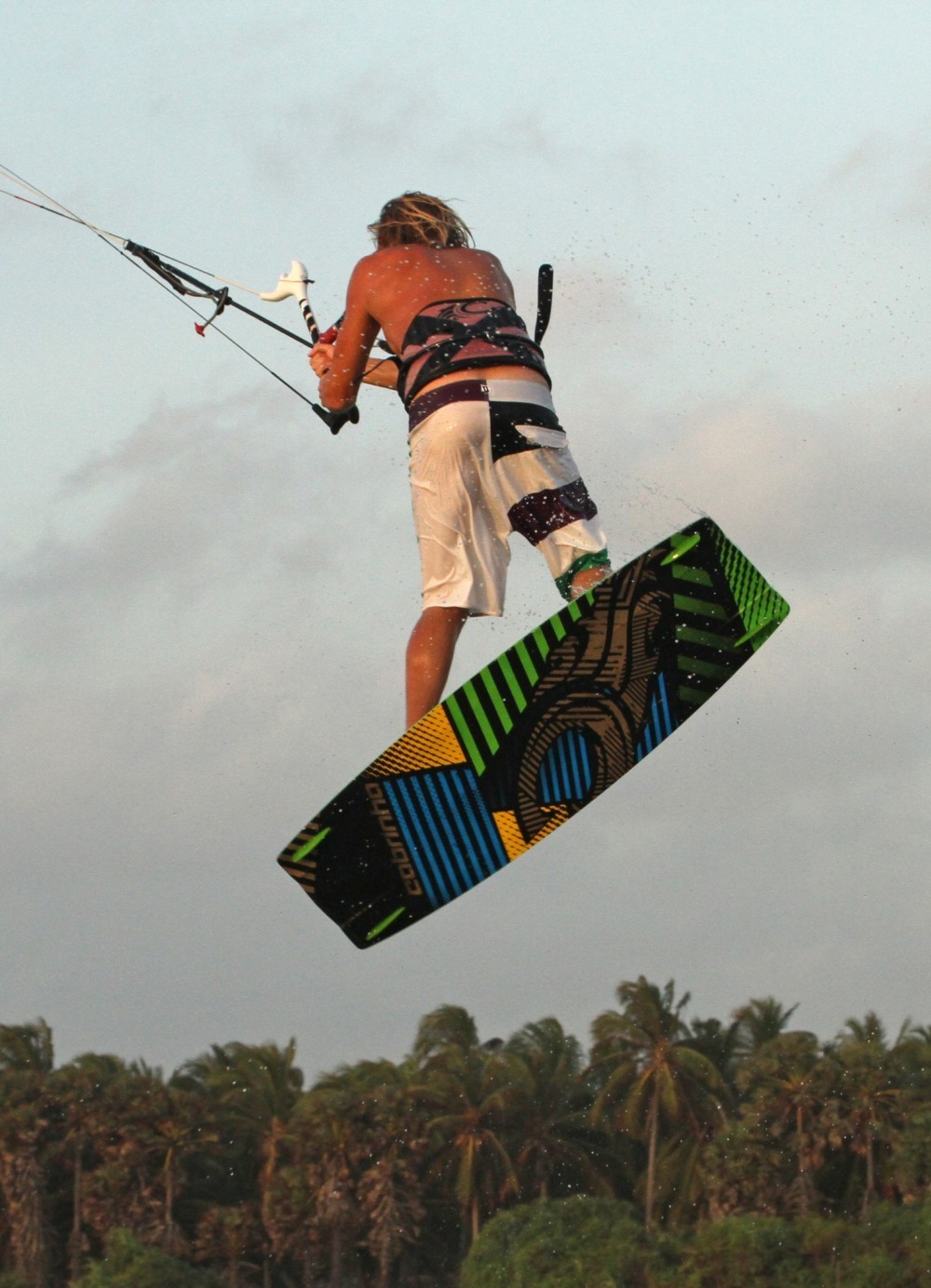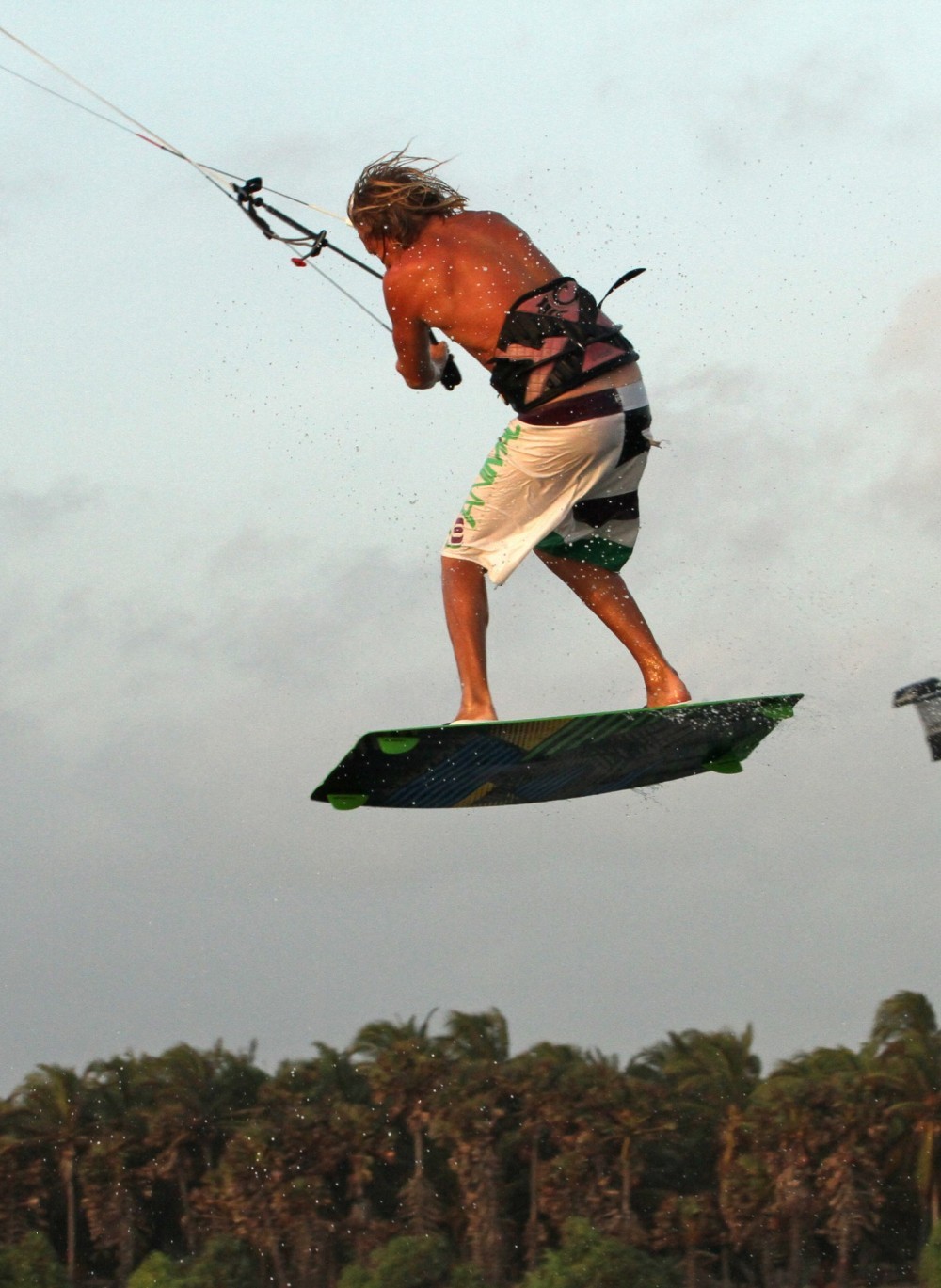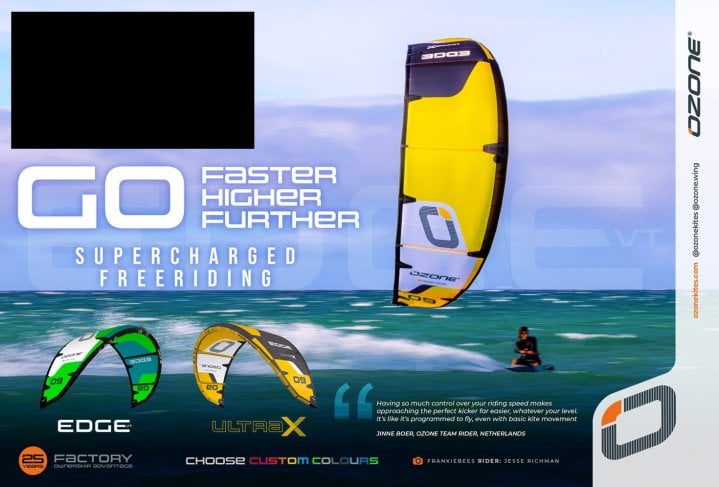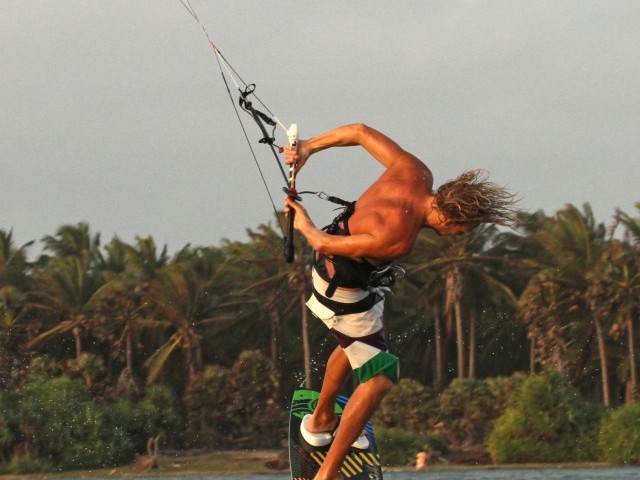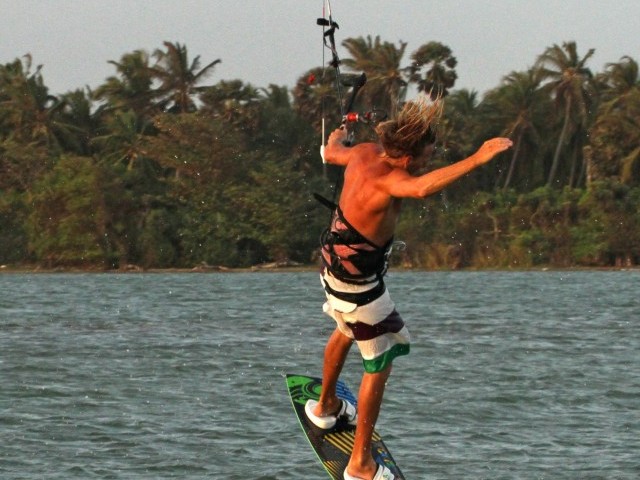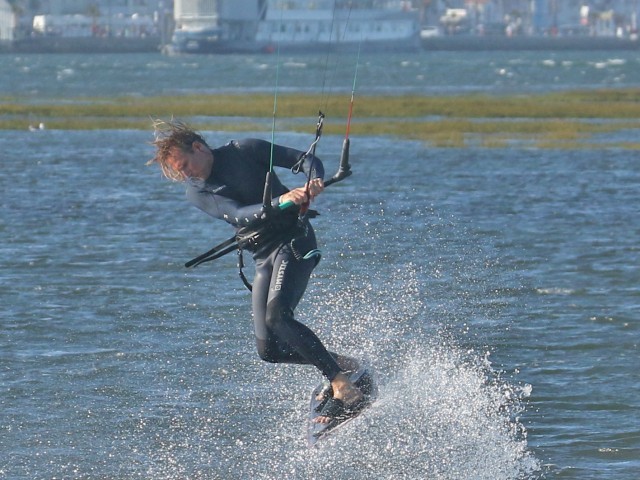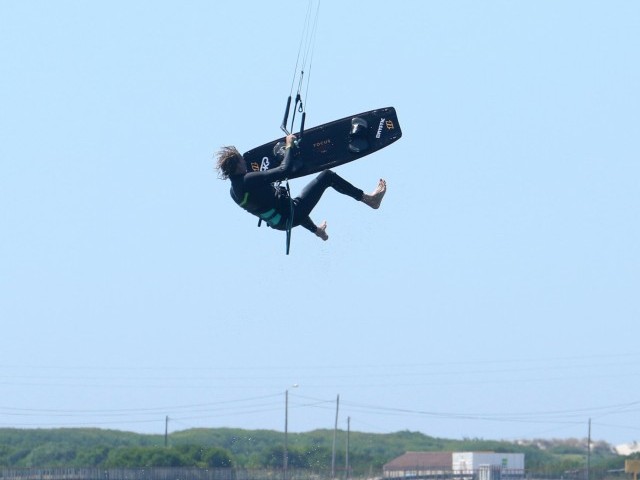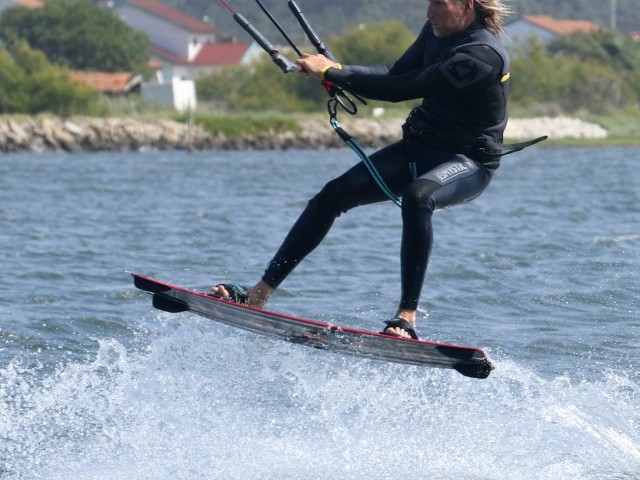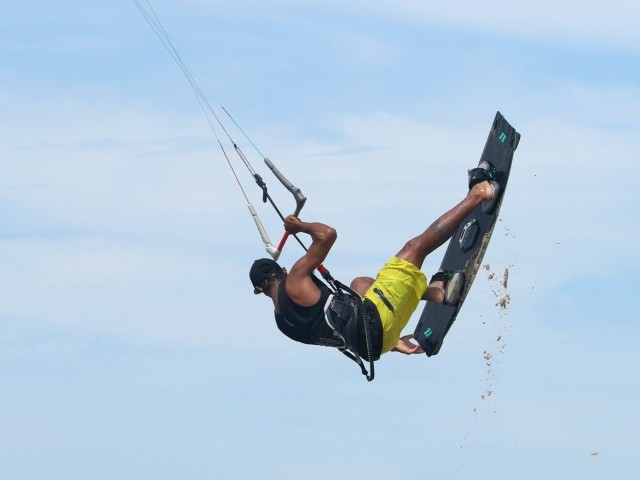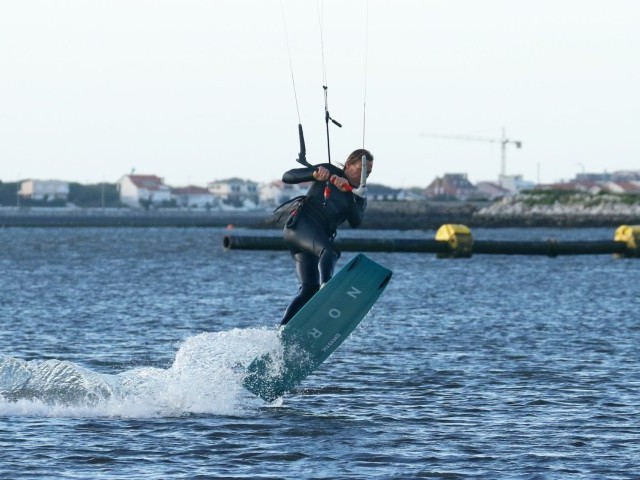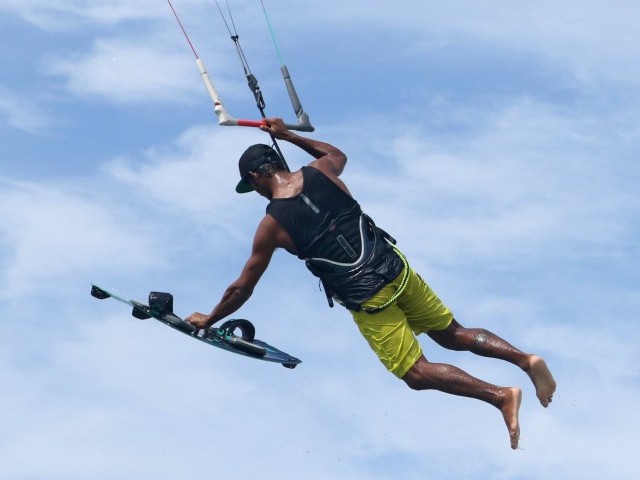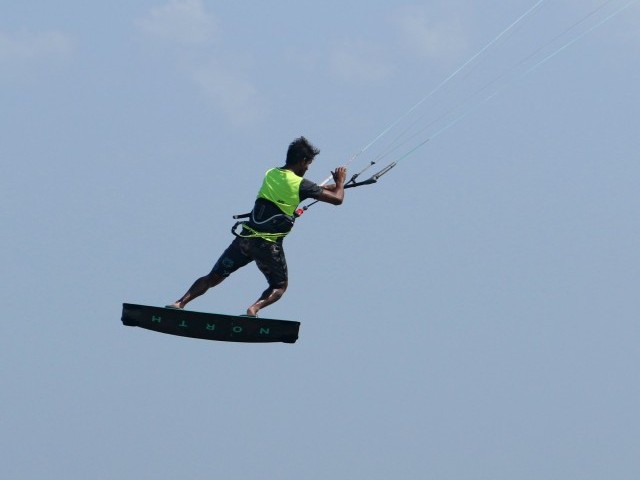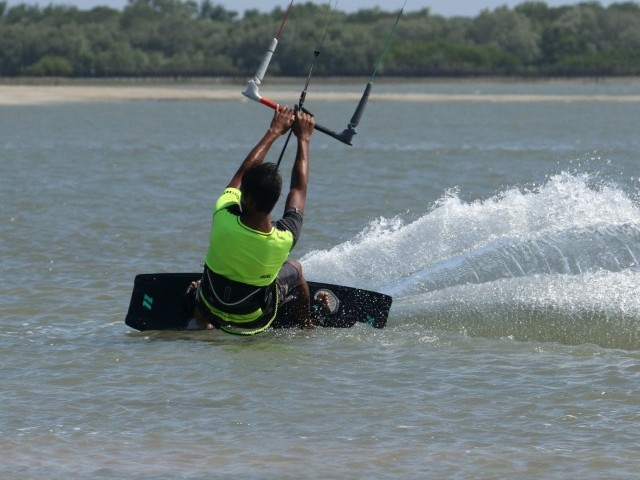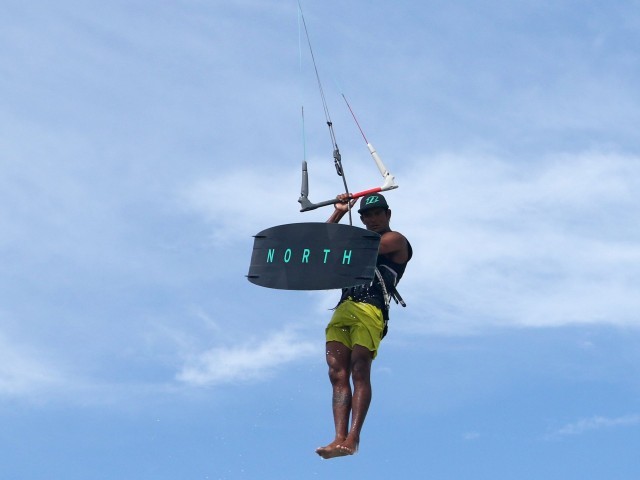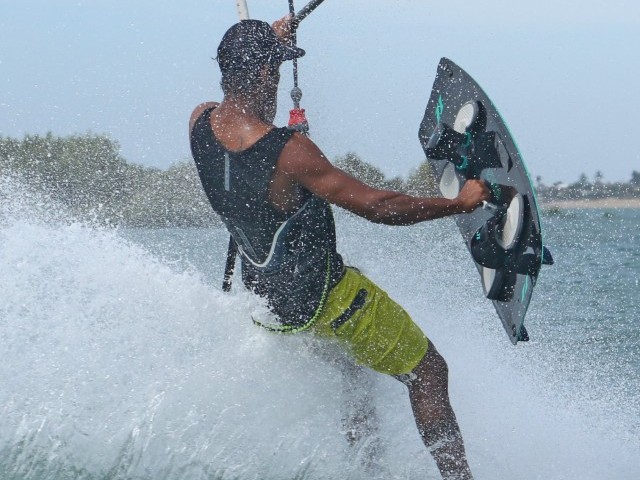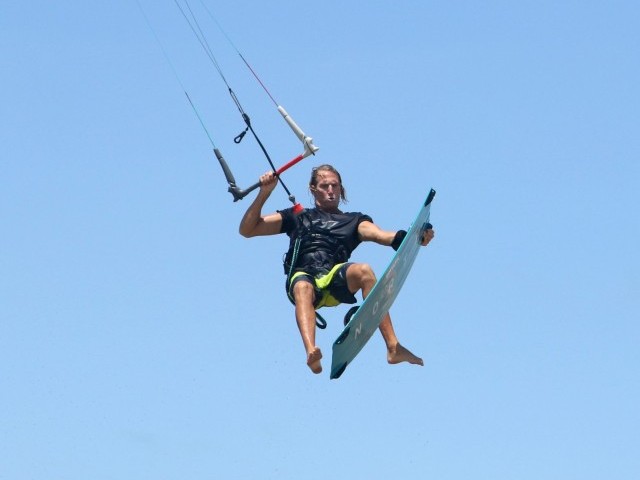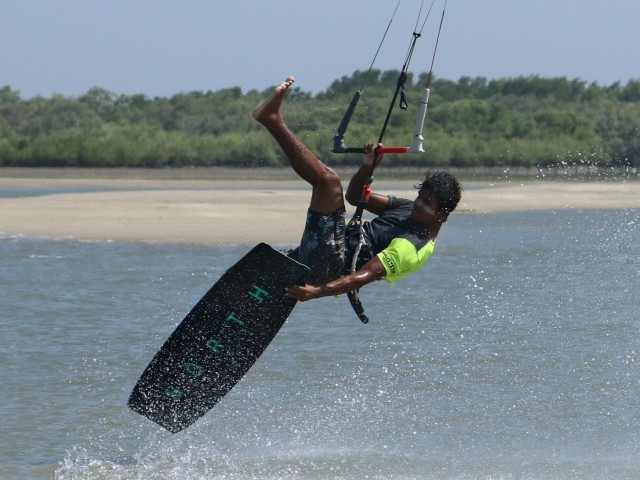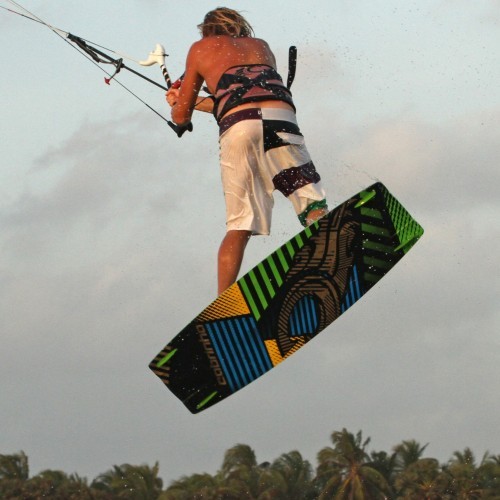
Kite Loop 3
Technique / Advanced
Introduction
The KL3 is a genuine pleasure to tame. Having a bit of pull from the kite and chucking a pass in to boot should get you cheering yourself on even without witnesses. Best bet before trying this would be to get your shifty 3 down, as that way you’ll be used to the rotation and muscle memory should prevail when you pull the trigger. For the more cautious amongst you, the progression step before this is the kite loop to wrapped, which we covered in Issue 21. It goes without saying, we hope, that at the very least you can comfortably and confidently stomp your unhooked fish polled kite loops!?
Approach and Pop
Perhaps a slight recap is necessary as your parting with water moment should be bang on to give you maximum hope of adding a pass and landing. Firstly you’ll need some height and therefore some up pull from the kite, not just some mad demonic downwind tug. Starting with your kite high, near as damn it to 12 o’clock will make all the difference. Trimming your bar down is also essential as not only will this make unhooking with your kite high possible, but it will also encourage your kite to loop, rather than spin on its axis.
Christian has already set his kite at 12, flattened the board off to unhook with his hips up, shoulders back and front leg straight. From that position he is able to move his front hand to the other side of the bar ready for some extreme fishing, and even more importantly he can then carve up hard and pop off his back leg before the kite pulls him. This is the key to getting height, if you edge for too long the kite will loop lower and pull you more downwind.
Lift Off
As you get launched into the air you must be ready for the pull as the kite starts to turn. Having popped up hard you will be extended, but in order to take the power and still be able to rotate you must brace and balance yourself.
As Christian explodes up off his back foot he puts all his effort into 2 things. Firstly he keeps his elbows in as tight as possible, so that his arms won’t extend too much as the kite pulls, which in turn will keep his body closer to the bar and ready for the pass. Secondly he pulls his knees up, making himself small, so that his legs and board don’t get left behind, and therefore have a chance of coming through and under the bar when he rotates into the pass. In short Christian is trying not to let his body extend into a Raley position.
Flick and Kick
Those of you familiar with the shifty 3 will be aware of the spin that your back leg can create as it comes towards the bar for the pass. The KL3 is no different in that you’ll spin more quickly if you can “involve” the back leg. In fact here it is almost easier as rather than having to kick it out behind you, the whip from the kite will tend to flick your back leg out, so just concentrate on keeping the front leg in and your back leg will be poised and ready to strike.
At this point Christian is watching the kite as it goes through the bottom of its loop and starts it’s journey back up. Keeping his elbows and front knee in the whip of the kite pulls him towards it, which conveniently flicks his back leg out, ready for the pass.
0 – 60!
As well as physical effort the timing of the pass will make or break this move. Although feeling is generally preferred, watching the kite during its loop is no bad thing as you need to “go” before the kite climbs back up in the window, as this will be the moment of least pull and the bar will be light and not pulling away from you.
As the turbo drops off, Christian pulls the bar down and back towards his trailing hip hard with both hands, so that his upper body comes up towards the bar. Simultaneously he pulls and swings his back leg up towards the bar, which no only helps him lift the board but also generates the momentum for the pass. You can see how close his body is to the bar now.
The Pass
No rocket science here, as all the usual rules apply. Assuming that you went early enough the kite will not be pulling the bar away from you, so the key is committing. Therefore as your back knee comes through you must release your front hand and turn your head and shoulders so that you don’t block the rotation. Also you must hold onto the bar with you back hand until you can reach it with your free hand behind you. Buy holding onto the bar you can rotate around it, making the pass more achievable.
You can see that Christian has twisted the bar behind him, which allows his shoulder and therefore body to rotate further around, almost rolling around the bar. This makes the pass simpler as by rolling onto the bar, it places the bar easily within reach of the searching free hand. Hence the progression from wrapped, as realistically you are first wrapped in the air, before passing.
Claim it
Once you’ve passed the bar preparation for landing is key. You need the board underneath you and your head looking forward and held high, whilst keeping your arm in as close as possible so that you complete the rotation sufficiently to land with the board heading down wind.
Christian has dropped his under carriage so that he’ll land on the board. Chances are that this will not be the softest of landings, so he’s lifted his head so that he can stand up and take it, whilst his elbow holding the bar is bent so that his body will follow the kite downwind and complete the rotation.
Top Tips
As is so often the way the fundamentals are key, so hammering out a few unhooked kite loops first will acclimatise you to the wind and more importantly the kites arc. Watch the kite and feel for the flick as the kite whips. This way you’ll be able to anticipate the dead point, where you’ll have the slack to pass. If you wait for it you’ll miss the moment.
It will make good sense to learn this with less power and build up from there. If you can nail a pass on a low fly by just before landing it counts and the consequences of it not working are just a splash.
We won’t be adding any common problems for this move, as it is a matter of concentrating on the relevant skills and putting them together - a comfortable kite loop with an explosive rotation.
Keystones
- Pop early
- Elbows in, Knees up
- Pull bar and swing back leg immediately after whip
- Hold on with back hand to roll around bar
- Get upright for landing and hold in front arm
Now to the Sequence and Videos for a step by step run through!
This technique article was in Issue 36 of IKSURFMAG.
Related
By Christian and Karine
Christian and Karine have been working together as a coaching team, running improver to advanced kitesurfing clinics since 2003.




